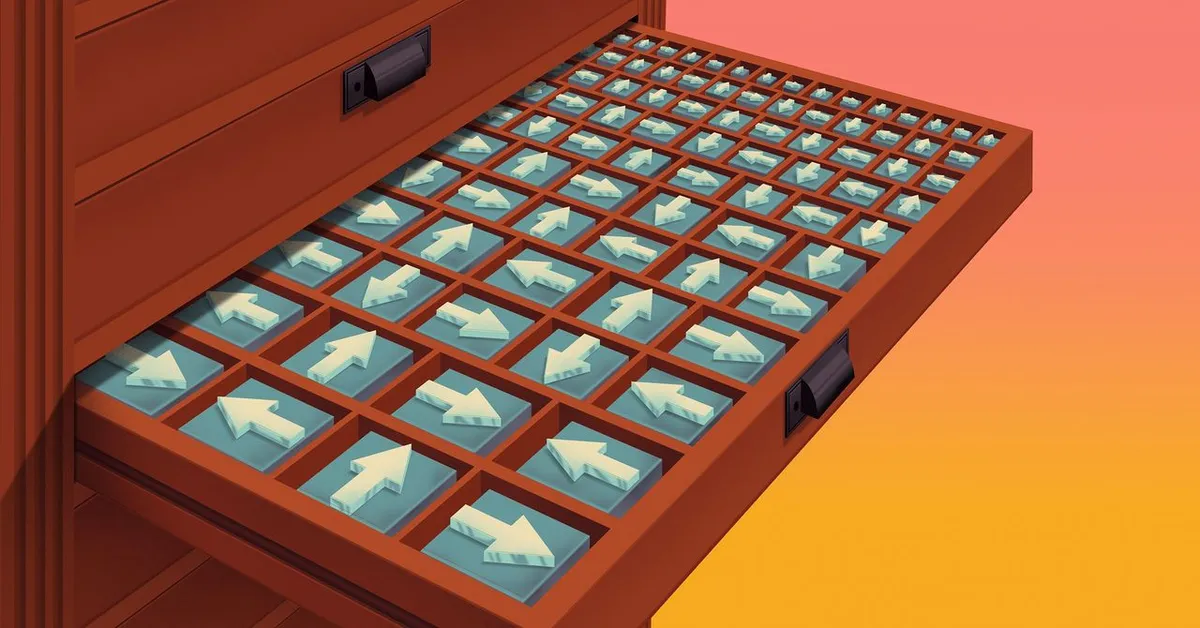
In the fall of 2021, an undergraduate student named Andrew Krapivin at Rutgers University stumbled upon a research paper titled “Tiny Pointers.” Initially, Krapivin did not grasp the significance of this paper, but two years later, a casual revisit would lead to groundbreaking advancements in the field of computer science. His exploration of the concepts within the paper prompted a paradigm shift regarding a widely utilized tool known as the hash table.
The term “Tiny Pointers” refers to arrow-like entities that direct users to specific pieces of information or elements stored in a computer's memory. Krapivin's enthusiasm for this concept led him to devise a method for miniaturizing these pointers, thereby reducing their memory consumption. However, this innovation necessitated a more efficient data organization approach, which led him to the traditional hash table structure.
As Krapivin tinkered with the hash table design, he made a remarkable discovery: he had developed a new type of hash table that operated faster than previously thought possible. This revelation raised eyebrows, especially for Martín Farach-Colton, a co-author of the original “Tiny Pointers” paper and Krapivin’s former professor. Given that hash tables are among the most extensively studied data structures in computer science, Farach-Colton was skeptical at first, questioning whether the advancement was genuinely credible.
Seeking validation, Farach-Colton enlisted the help of William Kuszmaul, a frequent collaborator and co-author of “Tiny Pointers,” to evaluate Krapivin’s creation. Kuszmaul's response was enthusiastic: “You’ve actually completely wiped out a 40-year-old conjecture!” This statement underscored the significance of Krapivin's work in advancing our understanding of hash tables.
By January 2025, Krapivin, Farach-Colton, and Kuszmaul published a paper demonstrating that their new hash table could indeed locate elements significantly faster than previously assumed. Alex Conway from Cornell Tech emphasized the importance of this research, stating that while hash tables are foundational to data storage, many questions regarding their efficiency remain unanswered. The new findings provided surprising solutions to some of those lingering queries.
Hash tables have become a staple in computing due to their straightforward design, allowing users to query, delete, or insert elements efficiently. Originating in the early 1950s, hash tables have been continuously refined and analyzed by computer scientists. A crucial aspect of their efficiency hinges on the ability to find empty slots within the table, particularly as the table approaches fullness.
Researchers have long understood that the time taken for the worst-case insertion in a hash table scales with its fullness, typically described by a variable x. For instance, if a hash table is 99 percent full, it would take approximately 100 attempts to find an empty slot. This understanding had been built upon Andrew Yao's 1985 conjecture, which posited that the best strategy for locating an element in a hash table was through a method known as "uniform probing."
For 40 years, many in the computer science community accepted Yao's conjecture as a truth. However, Krapivin approached his work unencumbered by prior knowledge of this conjecture. His innovative hash table design did not rely on uniform probing. Instead, it revealed that the time required for the worst-case scenarios of queries and insertions scales with (log x)²—significantly faster than the previously accepted limit of x.
The collaboration of Krapivin, Farach-Colton, and Kuszmaul not only disproved a long-standing conjecture but also identified (log x)² as the optimal threshold for this category of hash tables, marking a significant milestone in the study of data structures.
In addition to refuting Yao’s conjecture, the team's research unveiled an astonishing new result regarding average query times. While Yao had established a limit on average times for certain types of hash tables, Krapivin and his colleagues demonstrated that non-greedy hash tables could surpass this limit, achieving an average query time that remains constant, independent of the hash table's fullness.
This unexpected finding opens new avenues for understanding how data structures can be optimized, even if immediate applications are not yet apparent. As Conway noted, enhancing our comprehension of these data structures could eventually lead to practical breakthroughs.
The contributions of Krapivin and his team signify a monumental leap in our understanding of hash tables and their efficiencies. As they continue to explore this innovative approach, the implications for computer science are profound, paving the way for future developments that could transform how data is stored and accessed.